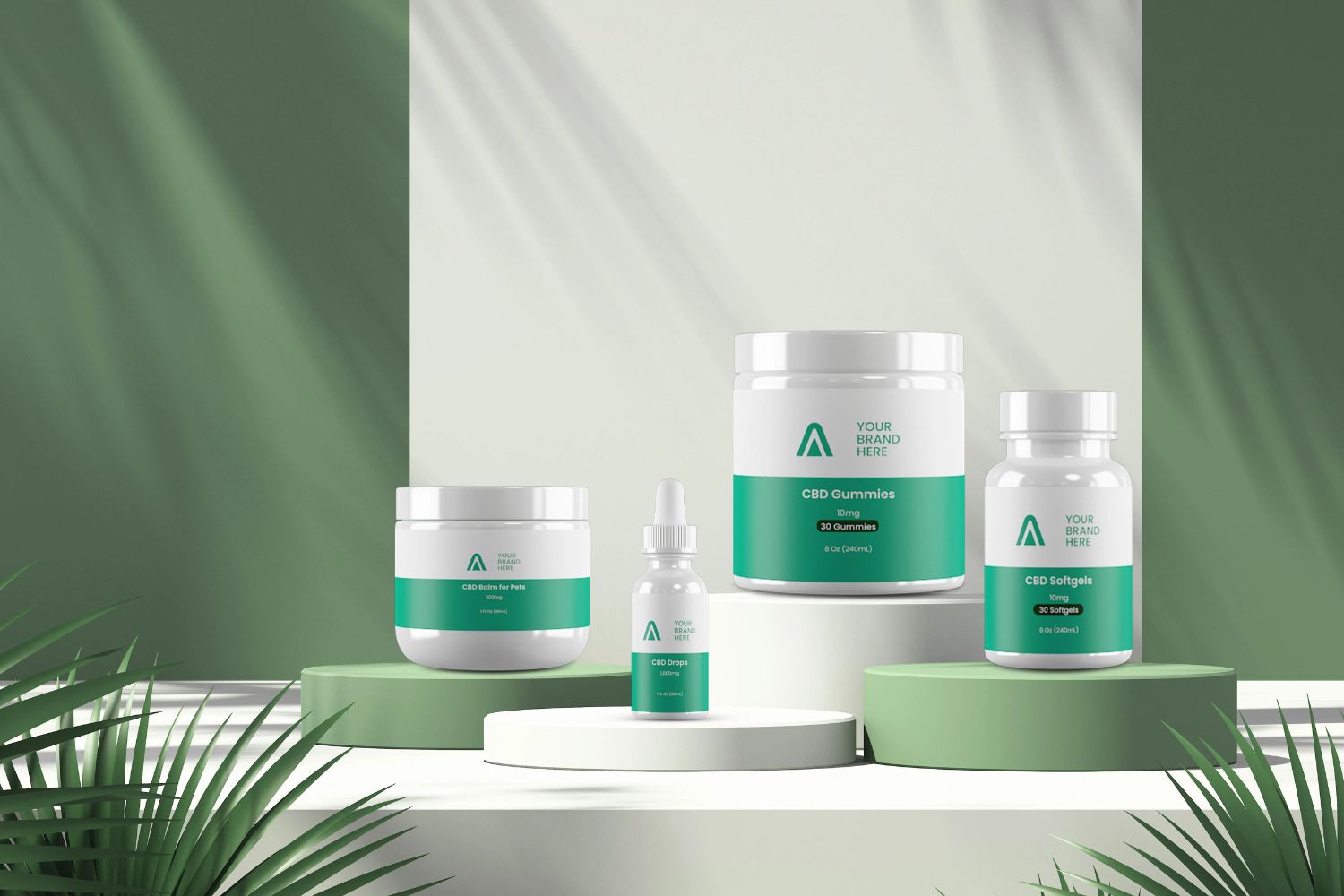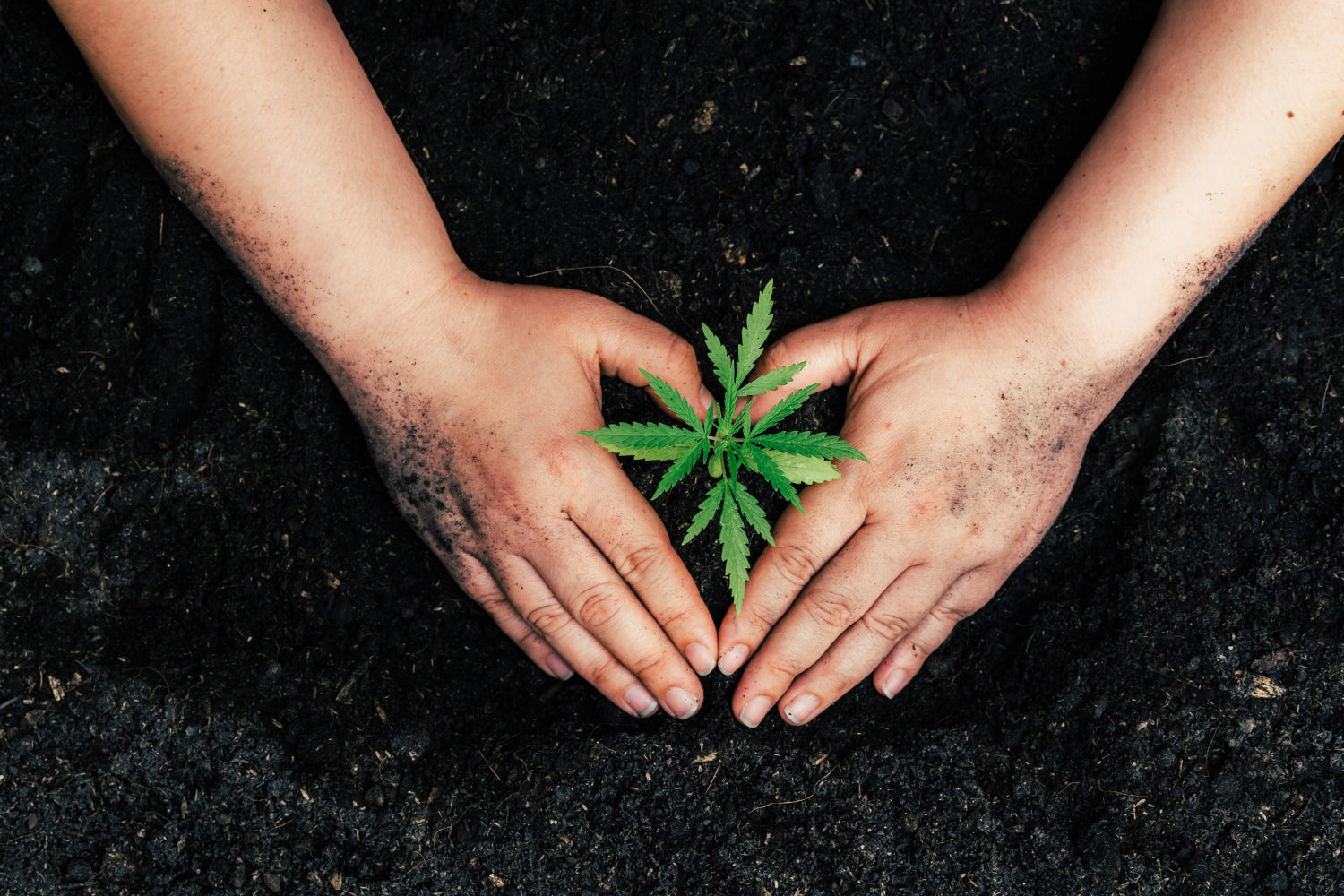THC - the boogeyman that CBD users avoid - may not be as easy to dodge as we think. By now, health-conscious individuals are flocking to broad-spectrum products due to their high volume of plant compounds. Best of all, these options contain no THC - or so we think.
Realistically, those products are anything but “THC-free” and could even exceed the safe (and legal) limits set out by federal law if it’s not executed properly. There’s no shortage of intoxication stories from products allegedly containing little or no THC. Yet paradoxically, third-party tests almost always detect no THC.
If you feel duped, don’t worry. Everyone thinks that third-party tests and positive independent reviews are enough - and they should be. But without established legal regulatory standards, rules are more akin to suggestions.
Fortunately, if you don’t like how something is played, you change the game. This is what a small - but growing - number of vendors decided to do.
But how can we confirm that these players aren’t also pulling the wool over our eyes? Let’s look at what they do and how you can undoubtedly confirm that their products contain no THC.
What is THC-Free CBD?
The term “THC-free” implies the product contains no THC. However, this isn’t always possible in broad-spectrum products.
Think of conventional THC-free hemp extracts like “decaffeinated” coffee. Companies remove caffeine from natural coffee beans, but small, insignificant traces inevitably stay behind. Broad-spectrum products are no different.
Regardless of the label, THC can still carry into the final product.
What is Non-Detect (ND) THC?
If you look at third-party lab tests, you’ll often see “ND” or “non-detect” for some measurements. On the surface, it sounds like the THC isn’t present - and this could still be the case.
But it’s overwhelmingly likely that the THC concentration is too low for standard tests to detect, allowing trace amounts to “fly under the radar.” This can mislead customers into thinking their product contains 0% THC.
Is CBD THC-Free?
CBD products can contain no THC, depending on which you choose. However, all of the options come with benefits and drawbacks. Understanding the similarities and differences is essential for making an informed purchase.
What is Full Spectrum CBD?
Full-spectrum (also known as “whole plant”) CBD is arguably the purest option. Manufacturers make no effort to remove THC from the product, instead embracing its benefits as part of a cumulative therapeutic effect.
However, the most glaring issue is THC. Full-spectrum products contain up to 0.3% THC.
Such small traces are unlikely to trigger a drug test or cause intoxication at high doses. Still, some people may not feel comfortable risking their jobs, not to mention potential legal complications.
Can Full Spectrum CBD be THC-Free?
No, full-spectrum CBD can’t be THC-free. The purpose of whole plant extract is - as the name implies - to retain every compound from a hemp cultivar. This includes THC.
What is Broad Spectrum CBD?
Broad-spectrum CBD offers a middle-ground between the higher THC full-spectrum or barebones isolates (more on that next). The product’s most significant advantage is retaining the hundreds of valuable terpenes and minor cannabinoids in hemp while (ideally) removing unwanted THC.
However, there are therapeutic benefits to mixing CBD and THC. Consequently, broad-spectrum products may be slightly less effective than their full-spectrum counterparts.
What is CBD Isolate?
Isolates are widespread for their purity, consisting of up to 99% CBD and no THC. They’re flavorless, colorless, and odorless, making them excellent for edibles or drinks.
Many CBD vendors use isolate to make candies or e-liquids since the product’s purity brings no off-putting “hempy” taste.
The glaring disadvantage is that isolates lack other crucial compounds, like minor cannabinoids and terpenes, for a robust therapeutic “entourage effect.”
In short, THC-free CBD is available, but its purpose focuses on fashion more than function.
Is Broad Spectrum CBD Always THC-Free?
No, broad-spectrum CBD isn’t truly THC-free. Contrary to popular belief, removing every molecule of THC from broad-spectrum products is impossible.
But aren’t third-party tests designed to detect THC? The simple answer is “yes,” but all tests have limits. As a result, there will always be some THC in broad-spectrum products - although it won’t approach the 0.3% limit of full-spectrum CBD.
At this point, the goal is to minimize THC content as much as possible. The results depend on your vendor’s THC removal process, experience, and capabilities.
Degradation vs. Separation-Based Technology
As of this article’s publication, two commonly-used industrial methods exist to remove THC from the whole-plant extract. Let’s explore these options and understand why Arvanna chooses the latter.
More about this topic will be discussed in another blog post.
Degradation
Degradation is the technique used by most vendors. This process happens when THC is exposed to the elements. Over time, the compound breaks down into cannabinol (CBN), a mildly sedating cannabinoid comparable to supplements like melatonin.
The degradation method accelerates the change through heat, pressure, and light. A process that takes days or weeks can now be done in hours.
However, a significant disadvantage has a massive impact on the final product and - consequently - your therapeutic benefits.
Exposure to the elements degrades all cannabinoids. While this breakdown may result in a chemical transformation (such as THC to CBN), others are weakened or destroyed. Unfortunately, a lower concentration is wasteful since you’ll have to consume more oil to get your desired effects.
Higher volume usage leads to more frequent purchases, which can seriously impact your wallet and deprive you of CBD’s full potential.
Separation
An emerging method, separation is rarely used by most vendors - Arvanna being one of those few. But despite its obscurity, there are excellent reasons to use this method, both from a therapeutic and financial perspective.
As the name implies, separation is when THC is naturally removed from the final product, mainly using physics rather than high temperatures.
THC and CBD have different molecular structures (although their atomic makeups are identical). In turn, they sink at different speeds. When passed through a filter, THC and CBD naturally separate from crude oil extract, allowing for complete THC removal without harming other valuable compounds.
Separation carries many advantages, which we’re excited to cover in a future blog post. For now, the most crucial benefit is that separation generates “THC-free” products as advertised.
Likely, separation will gradually become mainstream. In the meantime, keep a close eye on your vendor’s extraction techniques. It could prevent you from unknowingly consuming THC.
Continue reading below to learn more about Arvanna’s separation technology capabilities, thanks to our team of engineers and scientists.
What is the Limit of Detection (LOD)?
The limit of detection (LOD) is a minimum threshold by which a third-party test can detect substances - for instance, THC. LOD varies based on the labs and their tests, but be careful. Some laboratory tests’ LODs don’t go lower than 0.5%, far above the limits of full-spectrum products, let alone allegedly “THC-free” broad-spectrum options.
What is the Limit of Quantification (LOQ)?
Limit of quantification (LOQ) is similar to LOD. Both refer to a minimum detectable limit. While LOD addresses the minimum detectable levels, LOQ is more precise.
The difference is accuracy. LOD represents the minimum detectable amount, while LOQ is the lowest level that the test can accurately measure.
In other words, LOD tells you THC is present, while LOQ reveals the exact amount. The LOQ of a test will always be several times higher than LOD. For instance, results with a 6 mg/g (0.6%) LOD may have a 20 mg/g (2.0%) LOQ.
Where to Find the Specific LOQs of a Third-Party Lab Test?
Formats vary, but generally, you can find the LOQs (and LODs) as columns in the third-party results. They may be expressed in milligrams per gram, percentages, or both. The information should be laid out so that readers can quickly understand them at a glance.
Another option is to research the lab. Every test should have the third party’s name and possibly some contact information. Otherwise, a quick Internet search should point you in the right direction.
How LODs and LOQs Vary from Different Types of Samples and Analyses
Many testing methods are available, each with its standards and performance expectations. Consequently, the LOD and LOQ have different limits. Some are better at picking up THC, while others aren’t as effective.
However, this is an excellent way to determine a brand’s dedication to “purity” and “THC-free” broad-spectrum products. Brands that use mediocre tests with high LODs and LOQs may do you more harm than good.
Sadly, this disparity often leads to deceptive practices. While we hope this only applies to a few bad apples, some vendors deliberately use third-party labs with high LODs and LOQs. This makes it easier to pass off their products as “THC-free” when, in reality, the levels could exceed those of full-spectrum THC.
For instance, Arvanna chooses SC Labs for their tests because of their reputation for having precise test results compared to other labs and low LODs and LOQs to ensure no private label partner of ours has any issues with customer complaints regarding failed drug tests or THC intoxication.
How to Know if a CBD Product Contains THC?
The label is the first indication of whether a product contains THC. If listed as full-spectrum, up to 0.3% THC will inevitably be present. Isolates don’t contain any cannabinoids aside from CBD.
Broad-spectrum, however, isn’t so straightforward. Just because the product is advertised as “THC-free” doesn’t mean it contains no THC.
How do we avoid getting misled?
The first step, unfortunately, is to assume every brand isn’t being honest - at least if they use the degradation method. It’s a cynical approach, but an unregulated market means vendors can cut corners with relative impunity.
This calls for deeper examination if you can’t take lab tests at face value.
When it comes to third-party reports, timing is critical. Since many manufacturers dilute the final extract before testing, the lab results won’t be accurate.
An excellent way to ensure accuracy is by looking for vendors who test their pure oil extracts and avoid dilution.
Arvanna’s Flavora Broad Spectrum CBD Oil is an example of production and testing done right. We’ll get to the details next about how this brand creates broad-spectrum, genuinely THC-free products.
The Solution & How Arvanna Achieves below 0.001% THC
Arvanna is proud to be at the cutting edge of quality and technology. With our proprietary separation technology, we’ve eliminated many pain points associated with conventional degradation methods like CO2, ethanol, or butane using separation techniques.
In light of these developments, separation technology makes sense from both business and quality standpoints.
Arvanna adopted the revolutionary separation method and modified it into a proprietary technique. Ultimately, this allows unparalleled efficiency, quality, and purity that even conventional separation can’t deliver.
In other words, Arvanna carries the secret to top-quality broad-spectrum CBD that competitors can’t come close to matching.
At Arvanna, we can reach THC levels less than 0.001% THC (10 ppm), far below other “THC-Free” oils and distillates on the market, and significantly below any third-party lab non-detect levels in the world.
Conclusion: Be Cautious of Which "THC-Free" CBD Oil You Purchase
In an unregulated jungle of broad-spectrum CBD products, it’s difficult for even the most seasoned customers to find " THC-free " extracts as advertised. Conventional wisdom suggests looking at the vendor and its third-party lab reports. However, those can also be misleading.
Sadly, this further puts the onus on you to carefully research the brand’s purification techniques and their tests. Tedious as it may seem, this will be the norm until regulators step in and hopefully make clean separation techniques a standard rather than a luxury.
Remember that companies lie, individuals lie, but numbers don’t lie. By understanding how to read and interpret third-party tests, you’re well on your way to making more informed CBD purchases.






